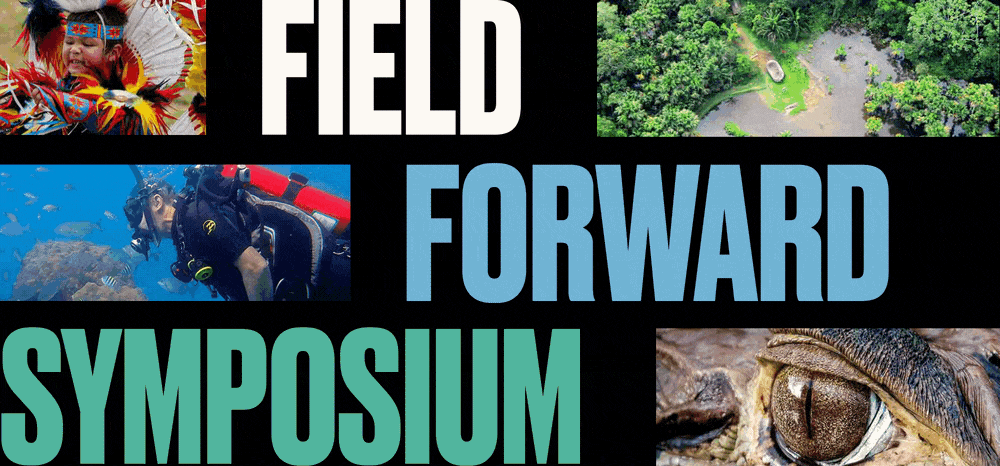

Join the Field Museum for thought-provoking conversations with science, arts, and community leaders from Chicago and around the world.
Register now to participate in this year’s Symposium events!
Join the Field Museum for thought-provoking conversations with science, arts, and community leaders from Chicago and around the world.
Register now to participate in this year’s Symposium events!
Your gift today provides for the Field's science, conservation and public learning impact. Thank you for investing in our mission to connect all of us to the natural world and each other.
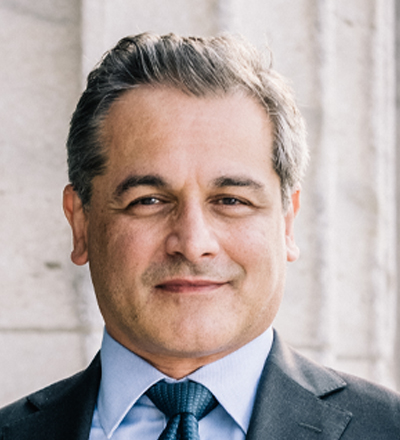
Julian Siggers has served as the President and Chief Executive Officer since September 2020.
Throughout his career, Siggers has championed the importance of communicating science to the public in a way that’s engaging and accessible. He has led countless initiatives–exhibitions, publications, programming, and digital media–to transform museums into vibrant spaces for public education and discovery that belong to the whole community.
Before the Field, Siggers was the director of the Penn Museum in Philadelphia from 2012-2020. He oversaw the renovation of many of the museum’s galleries and public spaces, including the Middle East Galleries, Africa Galleries, and Mexico and Central America Gallery. He also established the center for the Analysis of Archaeological Materials, an interdisciplinary center for training students in archaeological techniques, and led a $100 million fundraising campaign. Siggers guided implementation of new programs that welcome diverse audiences, including a program in which immigrants and refugees act as docents in galleries focused on their original countries.
Prior to the Penn Museum, Siggers was vice president for programs, education and content communication at the Royal Ontario Museum in Toronto from 2007 to 2012 and head of narrative and broadcast development at the United Kingdom’s National Museum of Science and Industry in London.
Siggers taught prehistoric archaeology for eight years at the University of Toronto. He earned his PhD there in 1997, with a focus on prehistoric humans in the Middle East. he received his MA in prehistoric archaeology in 1988 and BA with honors in archaeology in 1986 from the Institute of Archaeology at University College London.
Siggers is a member of the International Council of Museums (ICOM) US Board of Directors.
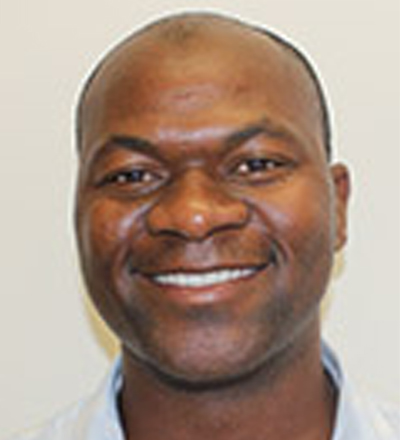
Foreman Bandama is an African archaeologist with specializations in ceramics, glass beads, archaeometallurgy, and heritage studies. His doctoral thesis from the University of Cape Town blended conventional material culture studies and archaeometallurgical analyses to explore the history, innovation, and technology of tin and bronze metallurgy in southern Africa. His work draws liberally from African theory and his lived experience as a product of a crafting rural Tsonga family from Zimbabwe. His recent awards include South African DHET’s Future Professorship, Y2 NRF Rating, and the 2019 best research paper prize in Antiquity journal.
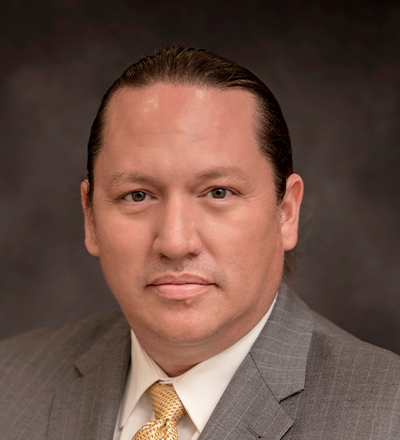
Ben Barnes currently serves as the Chief of the Shawnee Tribe. Prior to becoming Chief, he worked as a Shawnee language volunteer alongside his brother in hopes to revive the Shawnee language. Upon taking office with only a small number of fluent Shawnee speakers remaining, Chief Barnes declared a State of Emergency for the Shawnee Language and declared 2021-2030 the Decade of the Shawnee language.
Ben is also a member of his people’s traditional, religious community at White Oak Oklahoma. From this frame of reference he hopes to guide the Shawnee Tribe’s future, recognizing the importance of preserving the culture, language, and religion of the Shawnee to inform the crafting of tribal policy and law.
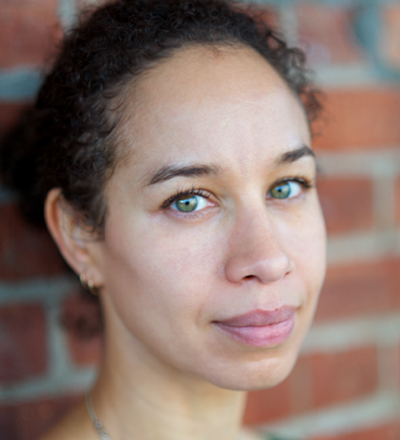
Dr. Louise Bernard is the founding Director of the Obama Presidential Center Museum.
As a Senior Content Developer and Interpretive Planner in the New York office of the museum design firm Ralph Appelbaum Associates, she worked on the design team that developed the Smithsonian’s National Museum of African American History and Culture, along with other national and international projects. She previously served as Director of Exhibitions at the New York Public Library, as Curator of Prose and Drama for the Yale Collection of American Literature at the Beinecke Rare Book and Manuscript Library at Yale University, and as Assistant Professor of English at Georgetown University. She received a BA Hons in Drama from the University of Manchester, an MA in Theatre History and an MA in English Literature from Indiana University, Bloomington, and a Ph.D. in African American Studies and American Studies from Yale. Her current research engages with the literary archive, material culture, museology, public history, and interpretive planning and design. She serves on the Advisory Council for the Johnson Publishing Company Archive, and is a recipient of the 2021 College of Arts and Sciences Distinguished Alumni Award from Indiana University.

Monica Rickert-Bolter is a Chicago-based visual artist and journalist of Potawatomi, Black, and German descent. Her artwork consists of traditional mediums, such as charcoals and pastels, graphic design, and digital coloring to create expressive characters and tell their diverse stories. After receiving her undergrad in Media Arts and Animation, Monica became more involved with Native nonprofits, where she combined her love of art and education to develop programs and resources for children. She worked with Chicago Public Schools to create a new interdisciplinary Latino and Latin American Studies curriculum incorporating Indigenous history and contributions. Passionate about storytelling through art and writing, she advocates for cultural representation in any project she undertakes and serves as a consultant for various institutions and organizations, like The Field Museum and the Terra Foundation for American Art. Monica writes under the pen name “Whitepigeon,” her family name, for online publications related to Native issues, creatives in the entertainment industry, and Indigenous-owned businesses. In 2020, she completed two children’s books as illustrator and layout designer, Journey of the Freckled Indian by Alyssa London and J.W. The Deaf Drummer by Myles Hunt. The following year, Monica co-founded the Center for Native Futures, a nonprofit for Natives in the arts, with a fellow artist group to nurture, elevate, and advocate for Indigenous Futurists. Currently, she participates in the Hyde Park Art Center’s Center Program and serves as an Embedded Artist for “Imagine Just,” an anti-racist arts community project in collaboration with Enrich Chicago and Greater Good Studio.
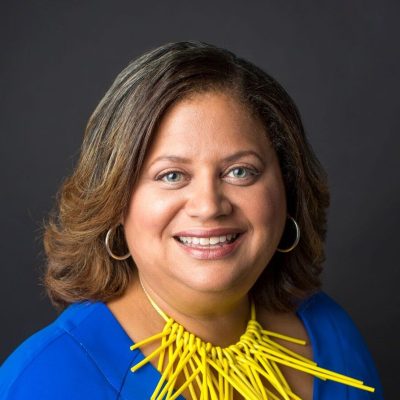
Michelle T. Boone is President of The Poetry Foundation based in Chicago, Illinois. Appointed in May 2021, she is the first woman and first African American to lead the organization. The Poetry Foundation, publisher of Poetry magazine, is an independent literary organization committed to a vigorous presence for poetry in American culture. Its programs are designed to shape a receptive climate for poetry by developing new audiences, creating new avenues for delivery, and encouraging new kinds of poetry through innovative literary prizes and programs.
Previously, Boone was the Chief Program and Civic Engagement Officer at Navy Pier, an historic landmark and top cultural destination and attraction in the Midwest. In this role, Boone designed, developed, curated and presented Navy Pier’s arts and culture public programs, festivals and specials events, and was a member of the executive leadership team helping to shape organizational strategy and public engagement. Other duties included overseeing the PR/Communications division, responsible for marketing, promotion and branding, and the Pier’s Diversity, Equity and Inclusion strategies and staff engagement.
In 2011, Michelle was appointed Commissioner of the Chicago Department of Cultural Affairs and Special Events (DCASE) by Mayor Rahm Emanuel. During her tenure, she led a team of more than 80 full-time employees to produce and present more than 2,000 public programs, large-scale festivals and special events annually; supervised the management of the historic Chicago Cultural Center; led the process for a new Chicago Cultural Plan (released in 2012); and launched the Chicago Architecture Biennial in 2015, the city’s first international exhibition of contemporary architecture and design. Prior to that, Michelle was a senior program officer at the Joyce Foundation (2004–2011) managing the culture portfolio and distributing more than $2 million annually in grants supporting artists and nonprofit arts organizations in six major Midwest cities (Chicago, Milwaukee, Minneapolis-St. Paul, Detroit, Cleveland, Indianapolis).
Her professional career includes work in television, film and the recording industries, and she served as a United States Peace Corps Volunteer in Chad, Africa (1994-96). Michelle holds a bachelor’s degree in Telecommunications and a master’s degree in Public Affairs (Nonprofit Management) from Indiana University, Bloomington; in 2015, the IU School of Public and Environmental Affairs honored her with its Distinguished Alumni Award. Boone is the recipient of multiple honors including being named a “Cultural Champion” by the Chicago Cultural Alliance in 2019; named “Design Leader of the Moment” by New City magazine (April 2019); and “Chicagoan of the Year” (architecture) by the Chicago Tribune in 2015. She currently serves on the boards of Americans for the Arts (vice chair); Arts Alliance Illinois (chair); The Arts Club of Chicago; Chicago Architecture Biennial; the Graham Foundation (secretary); Timeline Theater; and is on the Board of Governors for the School of the Art Institute of Chicago. She is a member of The Chicago Network. Michelle lives on the south side of Chicago and is a volunteer for South Shore Works, a community-led collective working to improve the quality of life in the neighborhood.
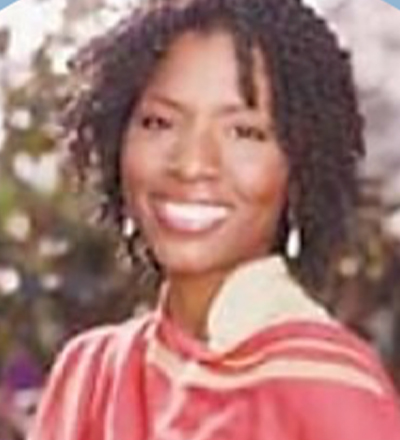
Johari Cole-Kweli is a sustainability professional and driver of 21st Century STEM, environmental education, and Ag and Eco-stewardship. She is a former research microbiologist for several major pharmaceutical companies including Bristol Myers and Eli Lilly & Co. For the past 25 years, Jahari has been the owner and operator of a 50-acre organic farm homestead dedicated to local food access, education and safety specifically in low-income communities and communities of color. She hosts on-farm research and food demonstrations, internships, Ag and Eco-Tourism, as well as environmental camps for next-gen scientists and environmentalists. Jahari serves as President and Managing Director of the Community Development Corporation of PHP, a volunteer-led community development organization in the Pembroke-Hopkins Park area; and consultant to the Field Museum, US Fish & Wildlife and other conservation institutions in sustainable development and community relations. She is currently a doctoral student in STEM education at Walden University.

Maurice D. Cox was appointed Commissioner of the Department of Planning and Development (DPD) by Mayor Lori E. Lightfoot and confirmed by the City Council on October 16, 2019.
Celebrated for his experience merging architecture, design and politics through multiple public, private and elected positions, Cox is responsible for leading DPD’s economic development, planning and zoning functions while fostering community-improvement initiatives throughout the city. His primary focus is under-invested neighborhoods on the South and West sides.
In his previous capacity as director of planning and development for the City of Detroit, Cox created a new, resident-centered planning and development department and led innovative urban planning and revitalization strategies that championed the equitable redevelopment of neighborhoods that fostered population growth and new mixed-use, mixed-income investment.
Cox was formerly the design director of the National Endowment of the Arts under President George W. Bush and President Barack Obama, where he represented the federal government for architecture and design matters and served as an advisor to more than 120 mayors on urban design issues.
He also served as mayor of Charlottesville, Virginia, from 2002 and 2004, following six years as a City Councilor. As an elected official, Cox implemented numerous community visioning processes and strategic planning initiatives that resulted in Charlottesville’s consistently high ranking as one of the most livable cities in the United States, as well as the smallest city in the country to maintain a AAA-bond rating for excellence in fiscal management. He also chaired the city’s Housing and Development Authority Commission, Metropolitan Transportation Planning Organization, and Mayor’s Taskforce on Urban Housing Policy.

Philip Enquist is a Fellow in the American Institute of Architects, an Honorary Member of the American Society of Landscape Architects and a consulting partner at Skidmore, Owings & Merrill.
Phil is the former Governor’s Chair for the State of Tennessee researching Energy and Urbanism with Oak Ridge National Laboratory and the School of Architecture and Design, University of Tennessee. In Chicago, Phil is currently serving on the Chicago River Governance Task Force and the Committee on Design.
Phil has been focused on ecological balance with urban settlement patterns and has been assisting in the planning of many urban river corridors, including: the Chicago River, the Yellow River, the Yangtze River, the Seine River, the Tennessee River, and the Los Angeles River.
From 1995 to 2017, Phil defined and led the City Design Practice (CDP) for Skidmore, Owings & Merrill. During that time, Phil, focused on planning efforts within rapidly urbanizing regions and collaborated with over 100 cities.
Beginning in 2009, Phil has led a pro bono initiative looking holistically at a vision for the international Great Lakes watershed, home to over 40 million people, 8 states and three Canadian Provinces, and the largest repository of surface fresh water in the world. This study, named “The Great Lakes Century” is a collaboration with the International Secretariat of Water, The Great Lakes and St. Lawrence River Mayor’s Initiative, and the Chicago Architecture Center.
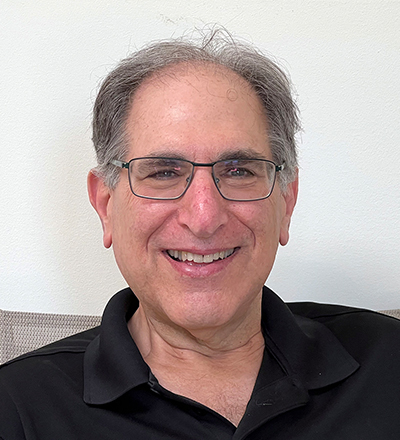
Gary Feinman is the MacArthur Curator of Anthropology at the Field Museum.
He received his Bachelor’s degree in Anthropology from the University of Michigan, Ann Arbor, and conducted his doctoral research with the City University of New York.
Gary has extensive experience leading international archaeological field projects. He has recently led excavations at Lambityeco in the Valley of Oaxaca, Mexico, which is his long-time study region in Mesoamerica. He is also a co-director of the Coastal Shandong Archaeological Settlement Pattern Project, which has surveyed in eastern Shandong Province for 19 field seasons.
He has published many books and scholarly articles, built on his field studies and a range of theoretical topics that include cities, governance, social networks, inequality, and markets.
Gary is the Co-Curator of the Field Museum’s Ancient Americas exhibition, the Cyrus Tang Hall of China, and a suite of temporary exhibitions including Chocolate and the Day of the Dead.
You can read more about Gary’s work here
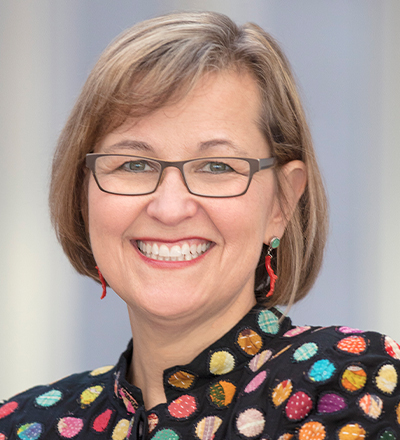
Kaywin Feldman is director of the National Gallery of Art in Washington, DC. Prior to joining the National Gallery in March of 2019, Feldman led the Minneapolis Institute of Art as its Nivin and Duncan MacMillan Director and President from 2008 to 2019. Prior to Minneapolis, Feldman directed the Memphis Brooks Museum of Art from 1999 to 2007. She is a trustee of the National Trust for Historic Preservation, the White House Historical Association, and the Chipstone Foundation, and a member of the State Hermitage Museum International Advisory Board. She is a past president of the Association of Art Museum Directors and past chair of the American Alliance of Museums. She lectures and publishes widely on many aspects of museums in the twenty-first century.
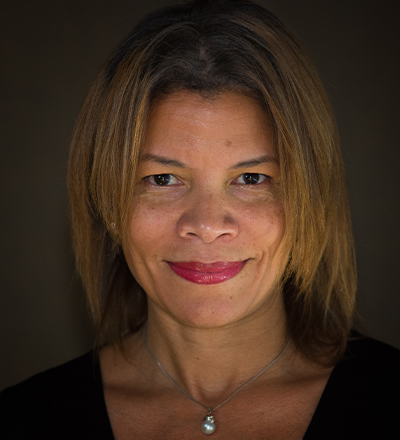
Dina A. Griffin, FAIA, NOMA, IIDA, NCARB, became president of Interactive Design Architects (IDEA) in 1999. Under her leadership, along with partners Charles Young and Robert Larsen, IDEA has successfully completed a multitude of projects for a variety of clients. Dina has been instrumental in bolstering the firm’s commitment to collaboration and the opportunity to create, learn and interact with other thought leaders in the profession. The firm has partnered with internationally renowned firms including Pelli Clarke Pelli Architects, and Renzo Piano Building Workshop. In 2016, IDEA was awarded The African American Cultural Center project at Dina’s alma mater, the University of Illinois. That same year, IDEA was selected to join the team of Tod Williams|Billie Tsien Architects to design the Barack Obama Presidential Center in Chicago.
Dina’s belief that change is inspired through leadership and has motivated her active involvement both within and outside the profession. In addition to past leadership and board positions with the National Organization of Minority Architects and the American Institute of Architects, Dina currently serves on the Illinois Architect Licensing Board as Chair and has served as treasurer for Region 4 of National Council for Architectural Registration Boards (NCARB).
Reaching aspiring students is fundamental to Dina’s mission to encourage and guide minorities interested in building valuable careers in architecture. She was elevated to the College of Fellows of the American Institute of Architects in recognition of her service to the profession, and to society, through her dedicated outreach to minority architecture students and emerging professionals.
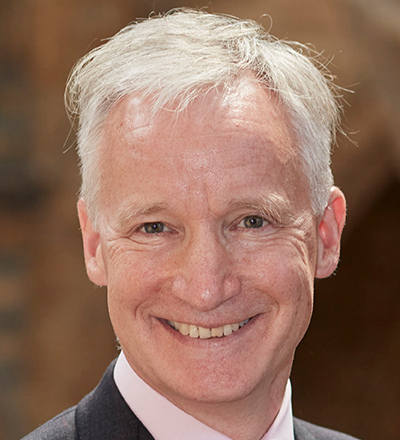
Doug was appointed Director of The Natural History Museum in December 2020.
Previously, Doug was Country Manager of Amazon UK and President of Amazon China. Earlier roles included the civil service, partner at McKinsey and Company, Director at Asda-Walmart and founder CEO of internet start-up Blueheath.
Doug is also Chairman of the British Heart Foundation, a non-executive Director at the Department of Health and Social Care, and former Chairman of the Science Museum.
He has degrees in Mathematics from the University of Cambridge and a PhD in Computing from the University of Edinburgh, and previously taught mathematics and computing at the University of Aarhus in Denmark.
He is a former Scottish international triathlete, 12 times Ironman, keen ski mountaineer with over 20 first ascents, and an enthusiastic mountain runner. He is married with two children.
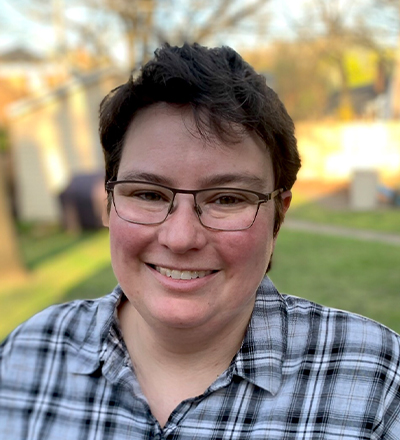
Erika joined the Keller Science Action Center over 10 years ago. They bring their background in both Ecology and Mapping to the center’s work on urban monarch butterflies and in Pembroke Township, Illinois. Erika’s favorite part of their job is collaborating with their social science colleagues to build conservation and quality of life in urban places.
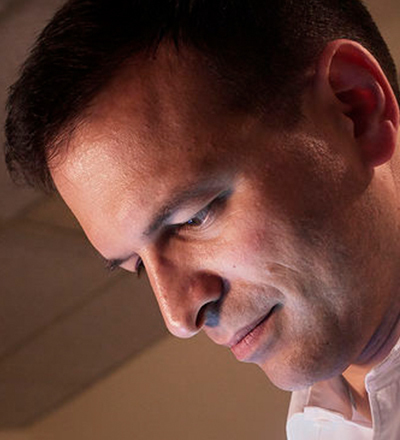
Philipp R. Heck is the Robert A. Prtizker Curator of Meteoritics and Polar Studies at the Field Museum. He is also a professor at the University of Chicago’s Department of the Geophysical Sciences and the College as a member of the Chicago Center for Cosmochemistry.
As the curator in charge of the Robert A. Pritzker Center for Meteoritics and Polar Studies, Philipp Heck oversees the collection of meteorites, the largest meteorite collection housed at a private research institution. Other responsibilities include the curation of the gem, mineral, rock, and economic geology collections.
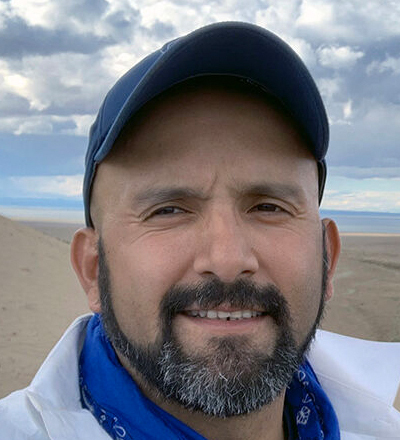
Fabiany Herrera grew up in Colombia, surrounded by the Andes and its many types of forests; from mountains to rainforests. He first became interested in rocks and mountains during his high school years and quickly fell in love with fossil and living plants later as an undergraduate student.
Some of Fabiany’s work includes the earliest evidence of Neotropical rainforests in South America (~60 million years old), enigmatic plants from Mongolia and China (~125 million years old), and fossil floras from Central America (~35-20 million years old).
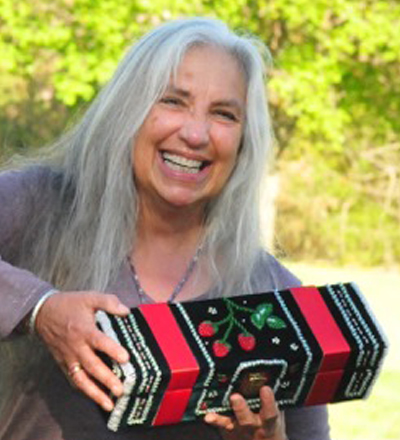
Karen Ann Hoffman has been beading peace, beauty, and meaning through her Haudenosaunee Raised Beadwork since the 1990s. Haudenosaunee Raised Beadwork (also known as Iroquois Raised Beadwork) is unique to the Six Nations of the Haudenosaunee Confederacy, characterized by lines of beads that arch above the textile surface for a three-dimensional effect, typically sewn onto velvet. Hoffman is a respected national leader in this art, known for reimagining existing forms to expand their significance for today and the future.
Retired from a sales career, Hoffman pursues her twin goals of strengthening Haudenosaunee Raised Beadwork within the Haudenosaunee community and gaining recognition for it more widely. She produces two to three large pieces each year, with some in the permanent collections of the Smithsonian National Museum of the American Indian, the Field Museum, the Iroquois Indian Museum, and the Oneida Nation Museum. She teaches and hosts a beading circle at her home. She is a co-organizer of the annual International Iroquois Beadwork Conference and has curated multiple exhibits of work by Native artists.
You can learn more about Hoffman’s work in the links below:
Karen Ann Hoffman in Artdose Magazine
Oneida woman wins national award for beadwork, art to be shown at Chicago Field Museum
Stevens Point Woman Creates Contemporary Art Using Iroquois Raised Beadwork
A Conversation with Haudenosaunee (Iroquois) Beadwork Artist Karen Ann Hoffman
Exhibit on American Indian sex-trafficking features work of Wisconsin-born artists

Curator, author, educator, administrator, and public advocate for reimagining the role of art museums in society, Sandra Jackson-Dumont has served as Director and Chief Executive Officer of the new Lucas Museum of Narrative Art since January 2020. Tasked with leading the museum through its opening and beyond, Jackson-Dumont oversees all curatorial, educational, public, and operational affairs for the fast-developing institution, including realization of the currently under construction 11-acre campus in Los Angeles’s Exposition Park, which includes a nearly 300,000-square-foot museum building designed by Ma Yansong of MAD Architects and an expansive new park designed by Mia Lehrer of Studio-MLA.
Prior to taking leadership of the Lucas Museum, Jackson-Dumont served as the Frederick P. and Sandra P. Rose Chairman of Education and Public Programs at the Metropolitan Museum of Art from 2014 through 2019. At The Met, she conceived of and produced institution-wide and citywide programming for audiences from schoolchildren and teachers to artists and scholars, including community engagement and academic initiatives, live performances, and partnerships involving more than forty other New York City cultural organizations. She is the visionary behind the The Met’s Civic Practice Partnership (CPP) which launched in 2017 to catalyze and implement creative projects that advance healthy communities by bringing the skills and interests of neighborhood stakeholders together with those of the institution and artists who are socially minded in their practice. Invited artists work in their own neighborhoods across New York City and at The Met to develop and implement ambitious projects and forge meaningful collaborations. Artists have included choreographer and performance artist Rashida Bumbray working in Bedford-Stuyvesant; multimedia visual artist Miguel Luciano working in East Harlem; Jon Gray of artistic and culinary collective Ghetto Gastro; Mei Lum of the W.O.W. Project, a community organizing and arts space in Manhattan’s Chinatown; and musician and composer Toshi Reagon.
Known for her ability to blur the lines—whether between academia and popular culture or traditional and non-traditional museum audiences—Jackson-Dumont has also held positions at the Whitney Museum of American Art, The Studio Museum in Harlem, and the Seattle Art Museum. Throughout her career, she has collaborated extensively with living artists, communities, creatives, and historical materials. Her work catalyzes the presence of increasingly dynamic and diverse audiences in cultural spaces while exploring issues of relevance. From 2000 to 2006 she programmed robust programs at The Studio Museum in Harlem. From 2006 to 2014, she held the post of Deputy Director for Education and Public Programs and Adjunct Curator of Modern and Contemporary Art at the Seattle Art Museum (SAM) where she oversaw education and public programs, interpretive technology, and community affairs across the museum’s three venues and organized exhibitions and collaborative projects of the work of artists including Theaster Gates, Titus Kaphar, LaToya Ruby Frazier, Aaron Fowler, Marie Watt, Nick Cave, Donald Byrd, and Sondra Perry. She is the person behind the creation of SAM’s Gwendolyn Knight and Jacob Lawrence Prize, a biannual award given to an early career Black artist which launched in 2009 and honored Lauren Halsey in 2021. She began her career in museums with an internship at The Studio Museum in Harlem.
A native of San Francisco, Jackson-Dumont earned her B.A. in art history from Sonoma State University and received her M.A. in art history from Howard University. While pursuing her career in museums, she has also taught at the Rhode Island School of Design, New York University, and the University of Washington.
Sandra Jackson-Dumont was elected to the Academy of Arts and Sciences in 2021. She has received many honors including the Medal for Distinguished Service of Columbia University’s Teachers College, 2016; the Distinguished Alumni Award of Sonoma State University, 2015; the Creative Leadership Award of the Paul G. Allen Family Foundation, 2013; and the Women of Color Empowered Award, 2012. She currently serves on the boards of LA Tourism, NeuroArts Blueprint Advisory Board, Seattle’s Friends of the Waterfront Project, and New York’s Friends of the High Line.
She lives in Los Angeles with her husband and two godchildren.
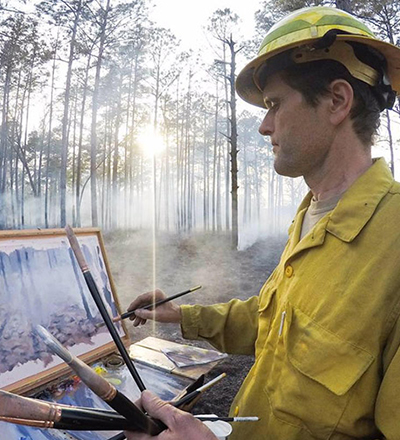
Philip Juras’s paintings express his desire to both explore and understand the patterns of the natural world. His love for nature and art began during his childhood in Augusta, Georgia, eventually leading him to receive a Bachelor of Fine Arts in 1990 and a Master of Landscape Architecture in 1997, both from the University of Georgia. His MLA thesis examined pre-settlement grasslands that once flourished in the southeast, a subject that continues to inspire his artwork. Now living in Athens, Georgia, with his wife Beth Gavrilles, Philip’s work explores the rich aesthetics of a wide range of ecologically intact natural environments. His ongoing projects include Georgia’s barrier islands, fire adapted landscapes of the Southeast, tallgrass prairie restoration in Illinois, and the páramo and cloud forests of the Colombian Andes. To depict these subjects Philip combines direct observation with study of the natural science and history of the place. The resulting images invite the viewer to step through the picture plane and experience the natural world beyond.
In 2011 Philip’s exhibition, The Southern Frontier, Landscapes Inspired by Bartram’s Travels, opened at the Telfair Academy in Savannah, Georgia. With its corresponding award-winning exhibition book, it explored the southern wilderness as William Bartram documented it in the 1770s. The Wild Treasury of Nature, A Portrait of Little St. Simons Island, opened in 2016 at the Morris Museum of Art in Augusta, Georgia. The exhibition and accompanying book examined the natural environments of one of the most ecologically intact barrier islands on the East Coast. His 2017 exhibition, Landscapes of Chingaza (Paisajes de Chingaza) at the Biblioteca Virgilio Barco in Bogotá, Colombia, celebrated conservation of the high elevation environments of Colombia’s Chingaza National Park.
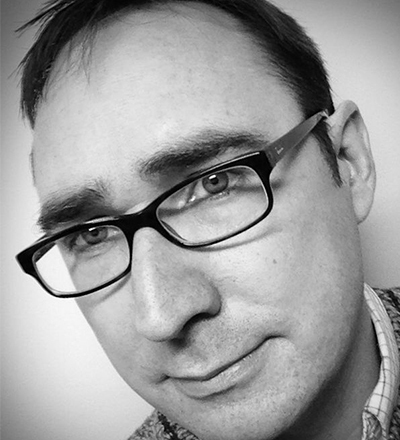
Jamie is the Head of Anthropology Collections and an Anthropology Collections Manager. He is responsible for the care of cultural collections from Asia, Europe, and the Near East as well as for archaeological collections from Africa. He works with communities and other visitors to connect them with these collections.
He has led several re-organizations and moves of collections to new storage areas. Between 2009 and 2010 he taught a US State Department funded Iraqi Heritage Training course at the Museum. He has worked with community partners and staff on the digitization of collections from the Philippines for an online curation portal. He has also worked in Brazil and the Midwestern United States, where his research interests are in the ancient history of the Upper Mississippi River Valley and Great Lakes regions around 1,000 years ago.
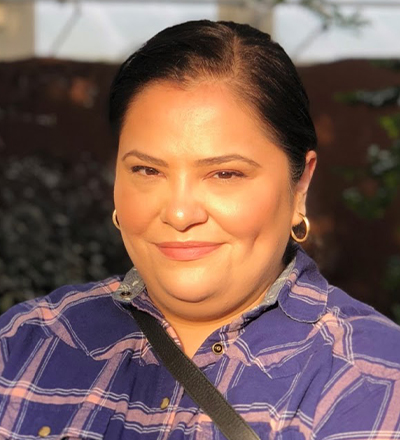
Lorena Lopez is Senior Community Engagement Specialist for the Keeler Science Action Center at the Field who works jointly with partner organizations and community members to understand and advance their conservation and community well-being goals in the Chicago and Calumet regions.
Her ultimate goal is to connect people to nature and encourage them to play an active role in restoring our natural areas. Lorena does this by meeting people where they are at – physically and emotionally. On her favorite days, find her hosting special events in Beaubien Woods, providing community members with native seeds or plant plugs, connecting with these people, and encouraging their participation in nature near their homes. With an environmental justice lens, she works to be a connector for healing and connecting with the nearby natural areas.
In addition to working at the Field Museum, Lorena has served on the Advisory Council of Environmentalists of Color. Her past work experience includes Faith in Place, where she is currently a board member. As the Open Space Coordinator for the Little Village Environmental Justice Organization (LVEJO), she led community mapping to demand a new, clean, safe park in Little Village. She and her team won significant victories, including the clean-up of 171 homes from cancer-causing toxic chemicals and the addition of new infrastructure around a park site. Lorena’s passion for nature grew for her love of her community when she started her first community garden at age 10. She and her partner are the proud parents of three children, and a native Chicago Southsider and proud to have Mexican roots from El gran Estado de Michoacán the wintering state of the Monarch Butterfly.

Check back soon for updated information!
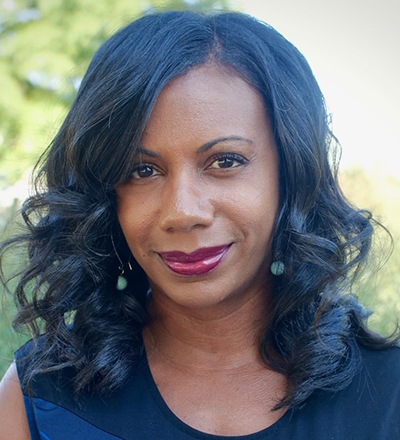
Natalie Moore covers segregation and inequality.
Her enterprise reporting has tackled race, housing, economic development, food injustice and violence. Natalie’s work has been broadcast on the BBC, Marketplace and NPR’s Morning Edition, All Things Considered and Weekend Edition. Natalie is the author of The South Side: A Portrait of Chicago and American Segregation, winner of the 2016 Chicago Review of Books award for nonfiction and a Buzzfeed best nonfiction book of 2016. She is also co-author of The Almighty Black P Stone Nation: The Rise, Fall and Resurgence of an American Gang and Deconstructing Tyrone: A New Look at Black Masculinity in the Hip-Hop Generation.
Natalie writes a monthly column for the Chicago Sun-Times. Her work has been published in Essence, Ebony, the Chicago Reporter, Bitch, In These Times, the Chicago Tribune, the New York Times, the Washington Post and the Guardian. She is the 2017 recipient of Chicago Library Foundation’s 21st Century Award. In 2010, she received the Studs Terkel Community Media Award for reporting on Chicago’s diverse neighborhoods. In 2009, she was a fellow at Columbia College’s Ellen Stone Belic Institute for the Study of Women and Gender in the Arts and Media, which allowed her to take a reporting trip to Libya. Natalie has won several journalism awards, including a Casey Medal for Meritorious Journalism. Other honors are from the Radio Television Digital News Association (Edward R. Murrow), Public Radio News Directors Incorporated, National Association of Black Journalists, Illinois Associated Press and Chicago Headline Club. The Chicago Reader named her best journalist in 2017. In 2018, she received an honorary doctorate from Adler University. In These Times gave her the 2017 Voice of Progressive Journalism Award. Natalie frequently collaborates with Chicago artist Amanda Williams.
She is a 2021 USA Fellow. The Pulitzer Center named her a 2020 Richard C. Longworth Media Fellow for international reporting. In 2021, University of Chicago Center for Effective Government (CEG), based at the University of Chicago Harris School of Public Policy, welcomed her its first cohort of Senior Practitioner Fellows.
Prior to joining WBEZ staff in 2007, Natalie was a city hall reporter for the Detroit News. She has also been an education reporter for the St. Paul Pioneer Press and a reporter for the Associated Press in Jerusalem.
Natalie has an M.S.J. in Newspaper Management from the Medill School of Journalism at Northwestern University and a B.A. in Journalism from Howard University. She has taught at Columbia College and Medill. Natalie and her husband Rodney live in Hyde Park with their four daughters.
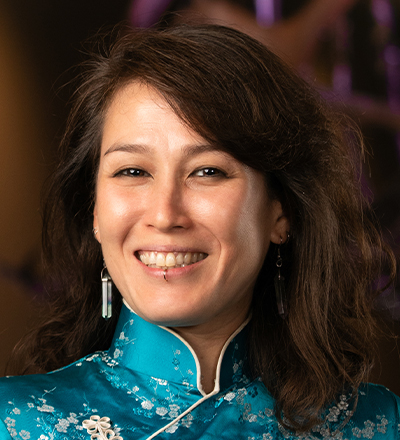
Jingmai O’Connor, PhD, is the Associate Curator of Fossil Reptiles with the Negaunee Integrative Research Center at the Field Museum. She became passionate about paleontology later in life while studying Geology at Occidental College. She received her PhD studying Mesozoic birds at the University of Southern California. Prior to joining the Field Museum, Jingmai worked with the Institute of Vertebrate Paleontology and Paleoanthropology (IVPP) in Beijing, China, becoming their youngest-ever professor.
Jingmai’s research explores the evolution of flight in the Dinosauria, the dinosaur-bird transition, and the evolution of modern avian physiology. She has conducted fieldwork in China, Mongolia, Romania, South Africa, Canada, and the United States.
Jingmai’s research has been published in Nature, Science, the Proceedings of the National Academy of Sciences, and Current Biology. In 2019, she was awarded the Schuchert Award for excellence in Paleontology under the the age of 40 by the Paleontological Society.
You can view Jingmai’s research with the links below.
Microraptor with Ingested Lizard Suggests Nonspecialized Digestive Function
New Information on the plumage of Protopteryx (Aves: Enantiornithes) from a new specimen
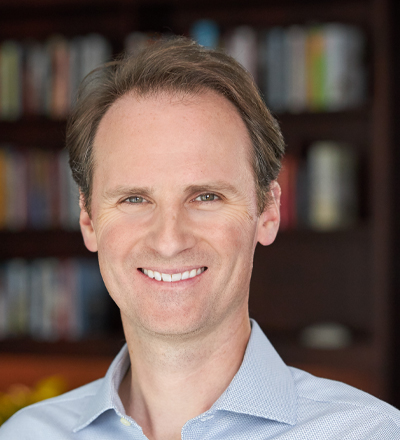
John Palfrey is President of the John D. and Catherine T. MacArthur Foundation.
Prior to joining the Foundation, Palfrey served as Head of School at Phillips Academy, Andover.
Palfrey was the Henry N. Ess III Professor of Law and Vice Dean for Library and Information Resources at Harvard Law School.
From 2002 to 2008, Palfrey served as Executive Director of the Berkman Klein Center for Internet & Society, which seeks to explore and understand cyberspace. He is founding board chair of the Digital Public Library of America, and is the former board chair of LRNG, a nonprofit launched and supported by MacArthur.
He is the author or coauthor of several books, including Safe Spaces, Brave Spaces: Diversity and Free Expression in Education. A revised and expanded version of his book Born Digital: How Children Grow Up in a Digital Age, which he co-authored with Urs Gasser, was issued in 2016.
Palfrey serves on the board of the John S. and James L. Knight Foundation and is a member of the American Academy of Arts & Sciences.
Palfrey holds a JD from Harvard Law School, an MPhil from the University of Cambridge, and an AB from Harvard College.
You can learn more about John here.
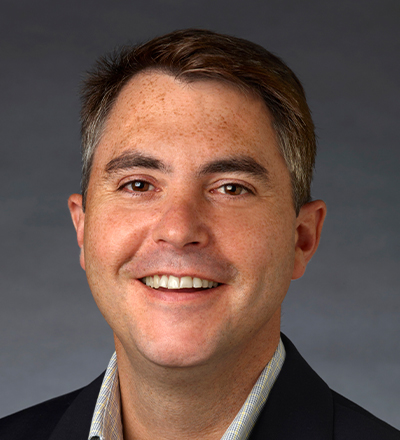
Bill Parkinson is a specialist in European and Eastern Mediterranean Prehistory. His anthropological research explores the social dynamics of early village societies and the emergence of early states.
Bill is the American Director of the Körös Regional Archaeological Project, an international, multi-disciplinary research project aimed at understanding the social changes that occurred on the Great Hungarian Plain throughout the Holocene.
He is the American Co-Director of The Diros Project, a multi-disciplinary regional research project that explores the social changes that occurred on the western Mani Peninsula of southern Greece throughout the Pleistocene and Holocene.
He received his B.A. in Anthropology from the University of Illinois at Chicago, M.A. in Anthropology from the University of Michigan, and Ph.D. in Anthropology from University of Michigan.
Bill is currently a professor in the Department of Anthropology at the University of Illinois at Chicago.

John’s passion for investing began at age 12 when his father began buying him stocks as Christmas and birthday gifts. His interest in equities grew at Princeton University, where he majored in economics, and over the two-plus years he worked as a stockbroker for William Blair & Company, LLC. In 1983, John founded Ariel to focus on patient, value investing within small- and medium-sized companies. While our research capabilities have expanded across the globe, patience is still the disciplined approach that drives the firm today. His professional accomplishments extend to the boardroom where he is a member of the board of directors of McDonald’s, NIKE and The New York Times Company. John also serves as vice chair of the board of trustees of the University of Chicago. In 2008, John was awarded Princeton University’s highest honor, the Woodrow Wilson Award, presented each year to the alumnus or alumna whose career embodies a commitment to national service. Following the election of President Barack Obama, John served as co-chair for the Presidential Inaugural Committee 2009, and more recently, he joined the Barack Obama Foundation’s Board of Directors. John received an AB in economics from Princeton University, where he was also captain of the varsity basketball team.
You can learn more about John’s work in the links below:
What Will It Take to Close the Wealth Gap?

Sara Ruane, PhD, is the Assistant Curator of Herpetology at the Field Museum.
Sara has been passionate about snakes, frogs, and other reptiles and amphibians since she was a young child and spent countless time walking in the woods, turning over logs and rocks with her grandmother. This led her as an undergraduate to study biology at the University of Massachusetts Amherst, and then to pursue a masters degree at the University of Central Arkansas, where she studied nest-site selection of Blanding’s turtles in Nebraska.
She completed her doctoral work at the City University of New York; her dissertation project used molecular data to better understand the taxonomic relationships of milk snakes across their ranges in the United States, Central, and South America. Sara conducted post-doctoral research at the American Museum of Natural History, focusing on the phylogenetics and describing unrecognized diversity of Malagasy snakes, and at the Louisiana State University Museum of Natural Science, studying poorly known snakes of Papua New Guinea and the surrounding areas.
Prior to joining the Field Museum, Sara was at Rutgers University-Newark. With the Field, her research focuses on describing and quantifying global reptile and amphibian diversity, in addition to addressing broad, contemporary questions in evolutionary biology.
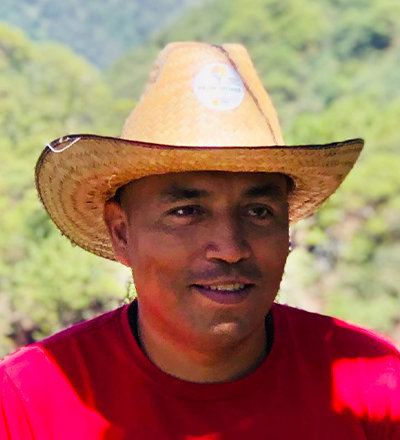
Alfonso “Piloto” Nieves is an artist who uses clay and garbage as his principal materials. Piloto has roots in both the high lands of Guanajuato and los barrios from Queretaro. He is a former undocumented immigrant who’s first language is art.
Piloto does community-engaging art projects based on social justice and environmental education. He teaches at Northeaster University’s Center for College Access and Success, 21st Century community learning center. Son y Arte community Art Camp, United Cultures for Art + Nature in Colorado, Mexico and Puerto Rico.
He has shown his art in numerous venues, including the Denver Museum of Nature and Science, the National Museum of Mexican Art, Expo Chicago, Museo MIT in Torino, Italy, north terrace of the Field Museum, Northerly Island, Navy Pier, Garfield Park Conservatory, National Botanical Garden of La Habana, Cuba, and many others. Most recently, Piloto created a permanent sculpture in la Habana Cuba during the XIII Art Biennial with the community and Cintio Vitier socio-cultural project
Additionally, Piloto is a home-based artist for the ARTivist program of Americas for Conservation + the Arts, the leading national brown-led organization that integrates art and science to advance real-world cultural and environmental resiliency in the face of climate change.

Weston Testo is a botanist working on the evolution of ferns and related plants, biodiversity informatics, and biogeography, among other topics. His work integrates natural history collections, biodiversity informatics, remote sensing, conservation, and modeling approaches and informs conservation efforts. He published extensively with recent papers in Nature, New Phytologist, and Frontiers in Plant Sciences. He joined the Field Museum in August 2022 from the University of Gothenburg in Sweden, where was a Postdoctoral Research Associate. Prior to that, he was a postdoc at the University of Florida. He received his Ph.D. in Biology (2018) from the University of Vermont and a B.A. in Biology in 2012 from Colgate University.

Dr. Maria Valdes is currently a postdoctoral fellow in the Robert A. Pritzker Center for Meteoritics and Polar Studies at the Field Museum. After completing an undergraduate degree in Geophysical Sciences at the University of Chicago, she completed a master’s degree in Earth and Planetary Sciences at Washington University in St. Louis, a Ph.D. in Geochemistry and Cosmochemistry at the University of Brussels, Belgium, and a postdoctoral position at Cambridge University in the United Kingdom.
She studies the history and evolution of the Solar System through the chemistry of meteorites, which she considers windows into our ancient past. Her current projects include studying HED meteorites, which are thought to derive from the Asteroid Vesta, and micrometeorites, which are dust-sized meteorites that fall to Earth in great abundance. Using chemical methods to understand them, she hopes these samples will eventually help contextualize our own planet’s origin and evolution within the Solar System.

Janet Voight, Associate Curator of Zoology, is a specialist in cephalopod mollusks, especially octopuses. In terms of where she works, it is the deep sea. If you work in the deep sea, there are times when you need to be a bit of a generalist, which is how Janet got interested in the wood-boring bivalves, the Xylophagaininae, and their apparent predators, the enigmatic echinoderm, Xyloplax. Discovery reigns supreme in the deep sea, as we know less about it and the animals that live there than we do about the back side of the moon. Janet’s work is building the framework that offers to change that situation, that framework of course being based on specimens collected at sea, and available for study at the Field Museum.

Elisha Waldman, MD, was born in New York City and raised in Connecticut. After earning a BA in Religious Studies at Yale University he received his MD in Tel Aviv followed by training in pediatrics at Mount Sinai Medical Center and Pediatric Hematology-Oncology at Memorial Sloan Kettering Cancer Center in New York, and Pediatric Hospice and Palliative Medicine at Children’s Hospital Boston. He has spent a significant portion of his career abroad, most notably several years practicing pediatric oncology in Jerusalem.
Elisha is active in the American Academy of Hospice and Palliative Medicine, where he currently serves on the Board as a Director at Large. He has also published in medical literature as well as national media outlets. He is a co-editor of and a contributor to the recently released Field Manual for Palliative Care in Humanitarian Crises (Oxford U Press, 2020). He is also the author of the nonfiction book, This Narrow Space, about his experiences working in the Middle East (published by Random House). His writing has appeared in the New York Times, the Washington Post, Time, the Hill, and elsewhere.
He is currently a pediatric palliative care physician at Lurie Children’s Hospital in Chicago, where he lives with his wife and two young sons
You can learn more about Elisha’s work and check out his book with the links below:
What We Get Wrong About Dying: a pediatric oncologist describes the lessons of his practice
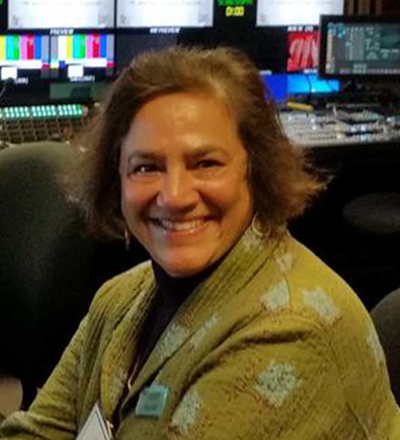
Alaka Wali, PhD, is curator of North American Anthropology at The Field Museum. As the founding director of the Center for Cultural Understanding and Change from 1995- 2010, she pioneered the development of participatory social science research and community engagement processes based in museum science. She curates the North American collection and is leading the content development component of the new Native North American Hall. She also works with colleagues in the Keller Science Action Center to implement environmental conservation programs in Chicago and the Amazon. Her research focuses on the relationship between art and the capacity for social resilience. Alaka was born in India and maintains strong ties to her birth homeland.

Jason Wesaw is a multi-cultural, multi-disciplinary artist, creating works in an array of media including ceramics, drawings, textiles, and traditional craft objects. His projects are informed by the natural world and convey stories that are rooted in place, reclamation, and the relationship to spirit. His creative lifestyle balances being a maker with dedicating time to Peace Keeping initiatives, repatriation, working with the land, and assisting in communities across the Great Lakes to share traditional knowledge as a means for intertribal learning and living.
Jason is Potawatomi (Turtle Clan) and lives near the historic Potawatomi settlement of Rush Lake, in southwestern Michigan. He has three children and a loving network of family, friends, and ceremonial relatives from across Turtle Island. He creates art for markets, galleries, & exhibitions, and his work is in the permanent collections of the Eiteljorg Museum (IN), Grand Valley State University (MI), and the Newberry Library (Chicago, IL).
You can learn more about Jason’s work with the links below:

Ryan Williams is an anthropological archaeologist who works on the earliest expansionist states of South America. His scholarly interests are focused on the development of ideological systems associated with early “global” politics. His interests include understanding the material basis for the interaction between different component groups in first generation heterogeneous expansive states, and the nature of the relationships between peer polities at this political scale.
Ryan’s research has centered on one of the few cases where extensive long-term direct contact between two such polities: Wari and Tiwanaku, can be archaeologically documented. He also works with colleagues in other regions under the domination of the same cultures in order to obtain a comparative perspective on this relationship
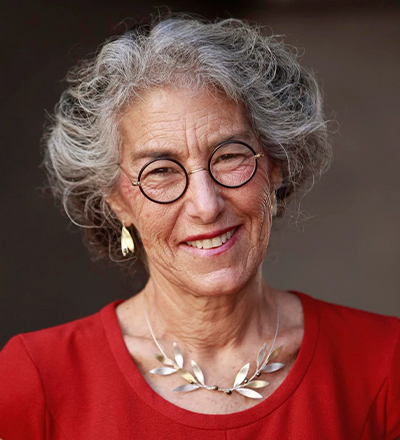
A leader in the field of religious studies with particular scholarly interest in bioethics and Jewish studies, Laurie Zoloth’s research explores religion and ethics, drawing from sources ranging from Biblical and Talmudic texts to postmodern Jewish philosophy. Her scholarship spans the ethics of genetic engineering, gene drives, stem cell research, synthetic biology, social justice in health care, and how science and medicine are taught. She also researches the practices of interreligious dialogue, exploring how religion plays a role in public discussion and policy.
Zoloth has been the president of both the American Academy of Religion and the American Society for Bioethics and Humanities and Vice-President of the Society for Jewish Ethics.
Her work on bioethics and health care led her to serve on the NASA Advisory Council; the International Planetary Protection Committee; the National Recombinant DNA Advisory Board, and the executive committee of the International Society for Stem Cell Research. She has testified in front of Congress, the President’s Commission on Bioethics, and state legislatures.
Zoloth began her career as a neonatal nurse working in impoverished communities; she holds a bachelor’s degree in history and women’s studies from the University of California, Berkeley and a bachelor’s degree in nursing from the University of the State of New York. She received a master’s degree in Jewish studies and a doctorate in social ethics from the Graduate Theological Union. Zoloth also holds a master’s degree in English from San Francisco State University.
Prior to joining the University of Chicago, Zoloth served as a Charles McCormick Deering Professor of Teaching Excellence at Northwestern University. At Northwestern, she was founding director of the Brady Program in Ethics and Civic Life at the Weinberg College of Arts and Sciences and founding director of the Center for Bioethics, Science and Society at the Feinberg School of Medicine.
She currently serves on the national Ethics Advisory Board of NASA; and the national steering committee of The Engineering Biology Research Consortium, She has served as the dean of the Divinity School and as the Senior Advisory to the Provost on Social Ethics at the University of Chicago.
You can learn more about Zoloth’s work and check out her books with the links below:
Health Care and the Ethics of Encounter: A Jewish Discussion of Social Justice
Second Text and Second Opinions: Essays on Jewish Bioethics
An Ethics for the Coming Storm: Jewish Thought and Global Warming
May We Make the World?: Gene Drives, Malaria, and the Future of Nature